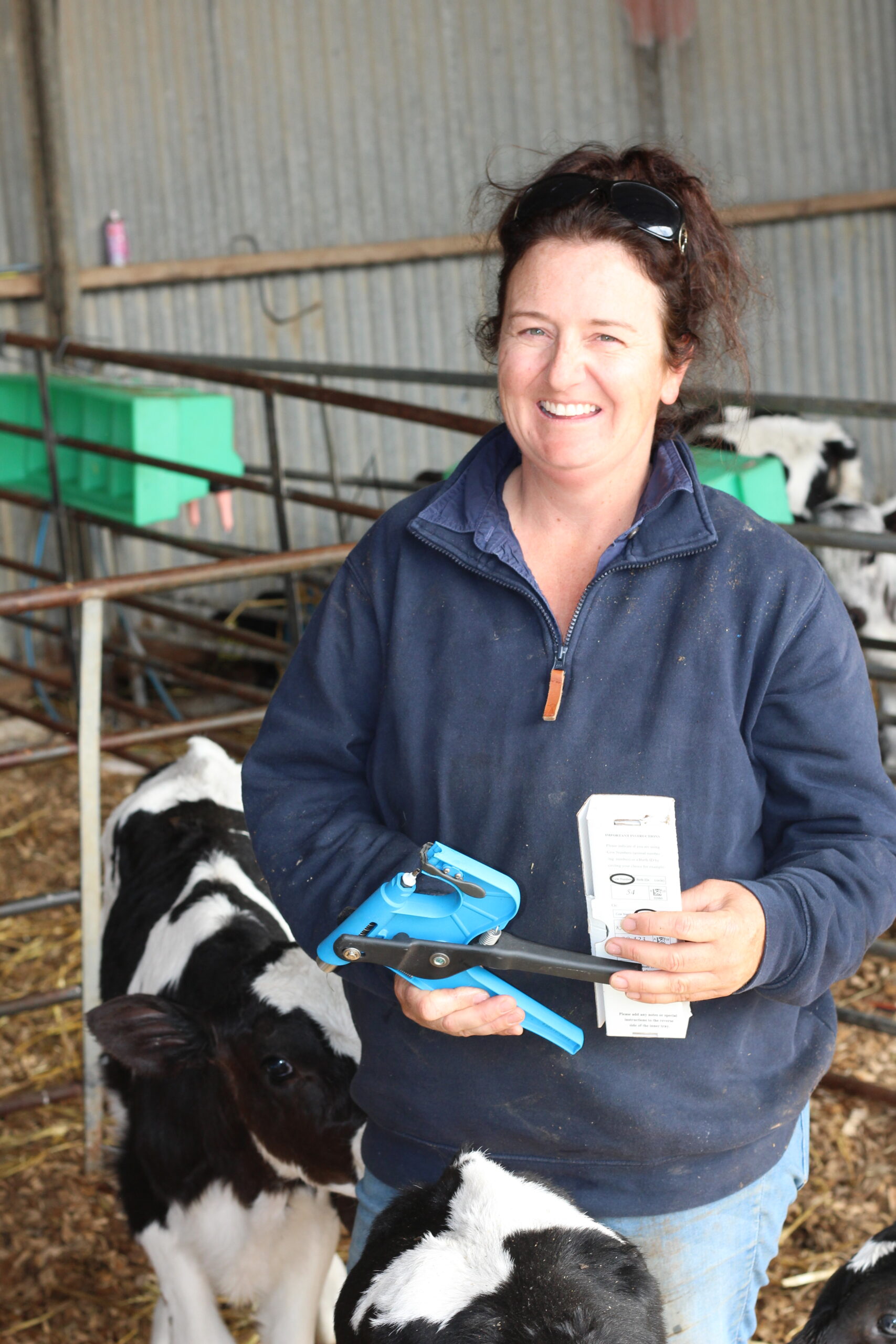Using science to confirm heifer retention decisions
Hayley Hutt
Region: Fleurieu Peninsula, South Australia
Topic: Genomic testing
Hayley Hutt has never felt better about selecting heifers to retain or choosing those to sell.
The South Australian farm manager has combined her traditional visual assessment of heifers with the objective science of genomics to make these decisions.
“We used to choose our export heifers by going through their mother’s herd test, if she was a good cow, we’d keep the heifer,” Hayley said.
“Now I look at their genomics, I put all the information on an excel spreadsheet and then it’s in front of me for when I want to go through it.
“Genomics is another selection tool; we still look at them and their herd test and we consider everything together.”
Combining a phenotype (performance) and genotype (genetic) assessment of the Holstein cows at the farm she and husband Ash Pacitti manage with farm owner Jeff Green, gives them confidence they are retaining their best animals.
“The extra confirmation? I love it,” Hayley said.

Hayley Hutt uses a combination of genomic results, dam production and visual assessment to decide which calves to sell and which to retain as replacements.
“I’d doubt myself all the time, but now, with a piece of paper that tells me the genetic potential of each animal, it takes the doubt out of my mind, and it is a relief that I’m not messing it up. It’s reassurance.”
Hayley, Ash and their children (Lochie 13, Cooper 11, Quinn 5 and Rory 1) work with Jeff to milk 280-300 cows, calving year-round, on 250 hectares.
The farm business on the South Australian Fleurieu Peninsula has been artificially breeding for about 50 years, concentrating on developing productive, fertile and functional animals that last for many lactations and walk across undulating paddocks to the dairy.
Hayley has worked with Jeff for the past 13 years and they have doubled down on improving the herd’s fertility, their legs and feet.
In recent years they have selected bulls considering DataGene’s Balanced Performance Index (BPI) as well as the specific traits they want to improve in the herd.
Genomic testing results have proven this selection process has paid off.
Fertility is something that’s come through strongly with early genomic results, an indication, according to Hayley, that the calves’ dams are fertile, and they are building on this strong base with genetics.
Hayley, Ash and Jeff are only new to genomic testing; they’ve tested 130 calves across two batches.
Each time they have sampled, they have taken ear notches from young calves and found the process simple.
“The first batch I did with our son Cooper – just him and I – and when we took a sample, we put an ear tag in,” Hayley said.
“The last batch we did it when we disbudded in the calf cradle, using pain relief, we also took an ear notch sample and then put an ear tag in.”
So far, the genomic results have only been used to make retention decisions, but Hayley said as more animals are genomic tested, they will expand their use of the data to possibly inform breeding decisions.
For now, though, they are enjoying the added genomic bonus of parentage verification – especially because Hayley and Ash live off farm.
“Jeff does the calf check late at night and early in the morning. When we are calving a larger batch he often comes back and says ‘Hails, I think I’ve got it wrong, but it won’t matter because you will find out when we genomic test’,” Hayley laughed.
“It’s the same if he’s put in the wrong straw at AI, it’s great because we can always check.”
Genomics will always remain a tool to complement other management decision processes for Hayley, Ash and Jeff.
Hayley has been especially keen to continue to combine it with visual assessments of animals.
“While genomics is the main thing I look at, if we haven’t grown-out a heifer properly, genomics won’t tell me anything,” she said.
“It can tell me it’s the best calf, but it is not going to be the best calf because of the management, that’s why it’s important to consider genomics with everything else.”


